The Sahel Beyond the Headlines: Population, Environment, and Security Dynamics
Between the Sahara to the north and savanna to the south lies the semi-arid Sahel, a region stretching from Senegal to Sudan that has experienced desperate poverty, climate change, malnutrition, and violence. While every context is different, the Sahelian countries share some common challenges, including a pattern of recurring crises and fluid borders. Boko Haram’s reign of terror in northern Nigeria and Mali’s coup have both had cross-border components.
A “multisectoral approach that includes gender, population, nutrition, climate change adaptation, conflict management, and humanitarian response must come together,” said Roger-Mark De Souza, director of population, environmental security, and resilience. He was joined by a more than a dozen experts, including former U.S. Ambassador to Niger Bisa Williams, at the Wilson Center on May 12 to go “beyond the headlines” in this troubled region and discuss some of the underlying trends driving instability.
Deconstructing Chronic Vulnerability
Recurring zones of drought throughout the Sahel have contributed to record levels of hunger. More than 20 million people went food insecure and 4.7 million experienced acute malnutrition in 2014, said De Souza. In 2012, up to 18 million people were at risk of starving across eight countries. The Sahel is particularly vulnerable to rainfall variability, land degradation, and desertification due to its high dependence on rain-fed agriculture and livestock, according to a study by the UN Environment Program. Climate change is introducing even more unpredictability in water and food availability.
To address this “resilience deficit,” USAID has launched several projects aimed at reducing poverty and improving food security, said De Souza. The Resilience and Economic Growth in Sahel – Enhanced Resilience Project aims to reduce severe to moderately hungry households by 20 percent, he said, improve the nutrition of 1.5 million children under five, increase off-farm income by $12 million and vulnerable household assets by $10 million, and improve natural resource management across 2 million hectares of land.
Development strategies must also address population dynamics. The Sahel is the fastest growing region of the world with total fertility rates ranging between 4.1 and 7.6 children per woman. Without improved access to family planning resources, the regional population of 80 million is projected to climb above 400 million by 2060, said Benoit Kalasa, director of the UN Population Fund’s technical division. Sixty percent of the population is expected to reside in cities by 2020 and 67 percent will be less than 25 years old.
Combined with environmental change – both climate and non-climate related – such rapid growth is threatening the viability of traditional livelihoods. “The economy in the Sahel, and Niger in particular, is based on agriculture and also animal husbandry,” said Sani Ayouba Abdou, founder and director of Jeunes Volontaires pour l’Environnement(“Young Volunteers for the Environment”), a Nigerien NGO. As these ways of life become less viable more young people are migrating to urban areas. To address youth unemployment, his organization has partnered with the Organisation International de la Francophonie to fund entrepreneurial proposals by young people to develop new rural businesses and expand job opportunities, including climate-smart agriculture to help young people adapt but continue producing food.
Gender Dynamics
Sahelian women are disproportionately impacted by these population and environment dynamics. “Coping mechanisms are highly gendered,” said Sylvia Cabus, gender advisor for USAID’s Bureau for Food Security. During hard times, in their capacity as providers for the family, women often reduce their own nutritional intake and may even sell personal assets or engage in sexual bartering to secure food. Others are forced to remove children from school or encourage early marriage to reduce household size, said Cabus.
It’s a “very patriarchal culture where women and girls have low status,” she said. Of the 10 worst countries to be a mother or a child, 4 – Mali, Niger, The Gambia, and Chad – are located in the Sahel, according to Save the Children.
Unlike other parts of Africa, many women in the Sahel actually desire more children than they have, which presents a challenge for efforts to expand reproductive health services. More than 222 million women worldwide have an unmet need for modern contraceptives, according to UNFPA and the Guttmacher Institute, but contraceptive use in West and Central Africa recorded no increase between 2008 and 2012.
According to Kalasa, who previously directed UNFPA’s regional office for West and Central Africa, the lack of uptake for contraceptives is muddled by poor education and lack of agency. Only one in two girls will attend school in West and Central Africa and more than 70 percent of girls are out of school in Chad and Niger, according to UNICEF. “Ensuring that the girls, they are well educated, they stay in school, that the women, they have the means to be economically and financially independent, unless you do that then they cannot be in the position to claim their rights to information and services,” said Kalasa. “If there is no education, if there is no economic empowerment of girls and women, the demand will not be there.”
“There’s a war on women in terms of her ability to control her body and in terms of her ability to be able to support her family,” said Bisa Williams, former U.S. ambassador to Niger and current deputy assistant secretary in the Bureau of African Affairs. “There’s a war on women when girls can go to school and take an exam and then be swept off to who knows where and nobody even bats an eye. There’s a war on women when girls are being forced to marry early, have no say in whether or not they’re going to marry, and/or are being mutilated on a daily basis because somebody else decides that’s what needs to happen to them.”
Maaike van Min, Sahel strategic lead for Marie Stopes International, which provides sexual and reproductive health services to hundreds of thousands of women in the Sahel, said they find women are receptive when they reach them on the ground. “We don’t actually listen to the woman enough about what she wants,” she said. “By listening to her we can see that it actually isn’t impossible to provide these services…We’ve dealt with the angry husband a lot, but we have also dealt with even more the woman who will come [to the clinic] despite her husband.”
Demographic Dividend or Danger?
Improving the status of women and girls is critical to turning the region’s economies around, said Sameera Maziad Al Tuwaijri, senior health advisor for the World Bank’sSahel Women’s Empowerment and Demographic Dividend Project. The aim of the project is to help Sahelian countries prepare for a window of opportunity called the “demographic dividend.”
As population age structures mature there can be a two to three decade period where the proportion of working age people to dependents is larger than usual. “The change in the age structure can lead to economic boost if actually used the way it should be,” said Tuwaijiri, as happened for the “Asian Tigers” last century. Achieving this dividend, however, requires both a decline in rapid growth and opportunity for young people in terms of education and jobs.
“Roughly one in four children in the world are growing up in Africa,” said Jack Goldstone, a Wilson Center fellow and professor of public policy at George Mason University. “By midcentury, it will be about 40 percent. The education, the socialization, and the stability of young people of this region of the world are going to be the dominant issue for conflicts in the years ahead.”
Effective, inclusive governments are able to provide education, which leads to declining fertility rates, which in turns leads to greater investment in young people per capita. “As youth feel they have more control over their own destinies, they’re more likely to do more constructive group activities,” he said. “They’re less likely to be drawn to deviant or extremist movements out of anger or frustration. They’re more likely to be engaged in building society and strengthening it.”
“There’s a big difference between 2 million people living in Amsterdam and 2 million people living in refugee camps,” Goldstone said. “One group is achieving great potential, the other is a constant source of frustration because it’s unable to.”
Globally, 80 percent of new conflicts originate in countries with youthful populations, saidRichard Cincotta, a Wilson Center global fellow and demographer in residence at the Stimson Center. There’s also a strong relationship between median age and democracy, according to Cincotta. “Youthful countries lose liberal democracies at quite a rapid rate,” he said, and in youthful countries that do achieve democracy, it is often short lived. “More than half of them are gone [within] 10 years,” he said. Reaching a median age of 26 tends to be a critical point at which it starts to become more likely a country can achieve and maintain democracy. The median age of all Sahelian states is under 20.
Getting through the demographic transition is important and necessary to achieve political stability, said Cincotta. “Lower fertility results in higher social spending by both the state and by parents on education,” he said. “Income feeds back into education because as income goes up kids stay in school longer.” These changes and others, like increasing gender equity, result in a higher median age and a society more likely to achieve a functioning democracy.
The region’s demography is also combining with economic inequality in unusual ways. Inequality tends to be higher in those Sahelian countries where fertility rates are below six children per woman compared to those where it remains higher, said Parfait Eloundou-Enyegue, a development sociology professor at Cornell University. This raises the potential for what he called an “uneven demographic dividend,” where the rich have much greater opportunity than the poor. “Class differences in demographic behavior translate into inequality among children, and these inequalities work their way throughout adulthood,” he said.
The differences in opportunity are most acute among peers. As young people transition from school to work and some go on to very different lives, it can brew frustration and disillusionment among those left behind, which in turn may trigger violence, said Eloundou-Enyegue.
A Holistic Approach
“The drivers of extremism and their insecurity and response applications have to be considered holistically,” said Vanita Datta, an advisor on countering violent extremism in USAID’s Bureau for African Affairs. “Some hold very strong views that no development agency should work in the nexus of security and militarism,” but “close to 60 percent of State and USAID’s foreign assistance goes to 50 countries that are in the midst of or trying to prevent conflict and state failure.” Development agencies are therefore increasingly adjusting their approaches.
USAID is buffering communities against drought, famine, violent extremism, and other shocks by trying to work specifically with those most likely to be influenced or recruited by extremist groups, like impoverished young people, as well as groups “that can provide mentorship and guidance to support community stability,” Datta said.
After the drought and food crisis in 2012, USAID also formed a “Joint Planning Cell” for the Sahel. “Population pressure, climate change, food price spikes, and weak governance were driving the same communities into crisis year after year,” said Tom Staal, acting assistant administrator for USAID’s Bureau for Democracy, Conflict, and Humanitarian Assistance. The cell is meant to coordinate humanitarian response with longer-term development objectives, reducing the region’s “emergency caseload” by at least 1 million people by 2017. We now assume droughts are likely, he said, rather than hoping it doesn’t happen, for example.
Other organizations are working to build trust within societies. “Social systems can create value even when an economic system isn’t there,” said Mike Jobbins, senior program manager for the Africa Program at the Search for Common Ground. The NGO works to prevent conflict by organizing community forums that bring together local leaders and state officials to discuss security issues. They also make a special effort to engage young people to help them integrate socially and have a voice, Jobbins said. They’ve found comedic skits and role playing have been especially effective at diffusing tensions at the community level and addressing gender issues.
A Window of Opportunity
As the world has turned its focus on the Sahel, there is a window of opportunity to “reframe our resilience paradigm” and focus on chronic conditions, said De Souza. The overarching driver of crisis is not a food deficit, but a “resilience deficit.”
Development organizations and governments should focus on community engagement, women’s empowerment, and social integration of young people, the panelists urged. “Empowering women and couples with education and appropriate resources helps reduce pressure on natural resources and promote long-term environmental gains,” said Alexandra Todd, a senior technical advisor in USAID’s Office of Population and Reproductive Health. “There can be no development without women and women cannot fully participate in development if their reproductive health needs are not met.”
An integrated approach can help mitigate conflict over scarce resources and enable communities to break the cycle of chronic crisis. “Whether it’s in northern Mali or the Lake Chad Basin, security challenges cannot be overcome if they are not tied to meaningful progress on the drivers of conflict: economic development, education, environment, [and] democratic freedoms,” said Ambassador Williams. “Increasingly we are seeing greater focus on the nexus of security and development, but still more needs to be done.”
Event Resources:
- Friday Podcast With Sylvia Cabus
- Friday Podcast With Parfait Eloundou-Enyegue
- Friday Podcast With Jack Goldstone
- Photo Gallery
Written by Carley Chavara, Theo Wilson, and Schuyler Null, edited by Schuyler Null.
Photo Credit: Cliff dwellings on the Bandiagara Escaprment in central Mali, courtesy of Marco Dormino/UN Photo.
Speakers
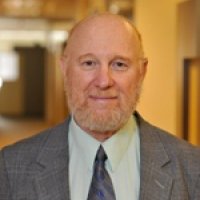
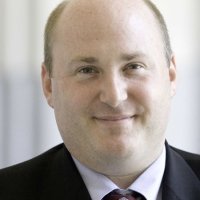
Professor and Associate Dean, George V. Voinovich School of Leadership and Public Affairs, Ohio University; Associate Senior Fellow, Environment of Peace Initiative, Stockholm International Peace Research Institute
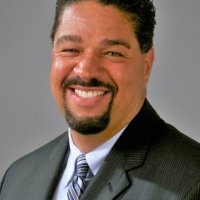
Vice President, Sustainable Markets, Pact
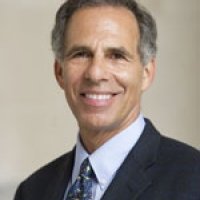
Virginia E. and John T. Hazel Professor of Public Policy, George Mason University; Wilson Center Fellow
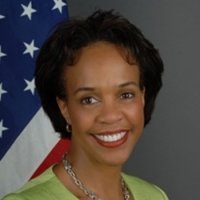
Hosted By

Environmental Change and Security Program
The Environmental Change and Security Program (ECSP) explores the connections between environmental change, health, and population dynamics and their links to conflict, human insecurity, and foreign policy. Read more


Africa Program
The Africa Program works to address the most critical issues facing Africa and US-Africa relations, build mutually beneficial US-Africa relations, and enhance knowledge and understanding about Africa in the United States. The Program achieves its mission through in-depth research and analyses, public discussion, working groups, and briefings that bring together policymakers, practitioners, and subject matter experts to analyze and offer practical options for tackling key challenges in Africa and in US-Africa relations. Read more
